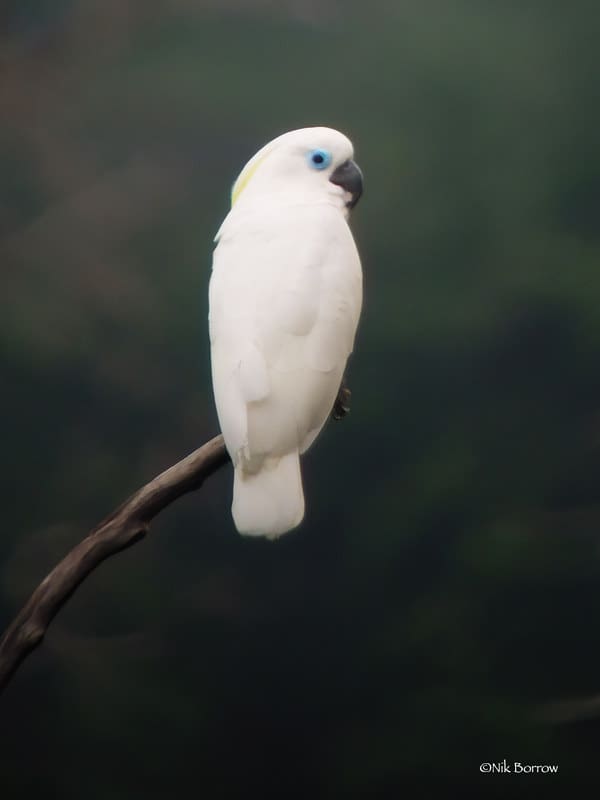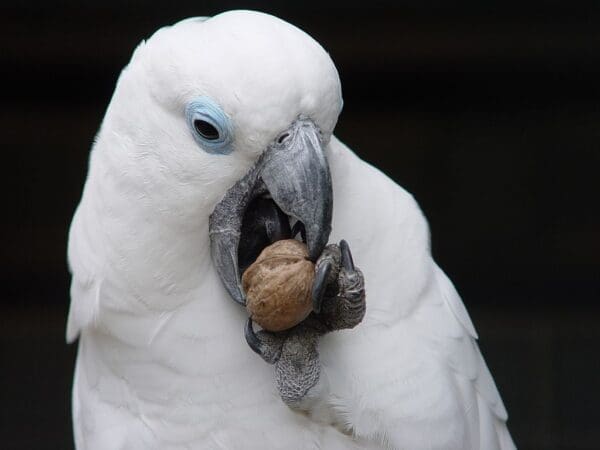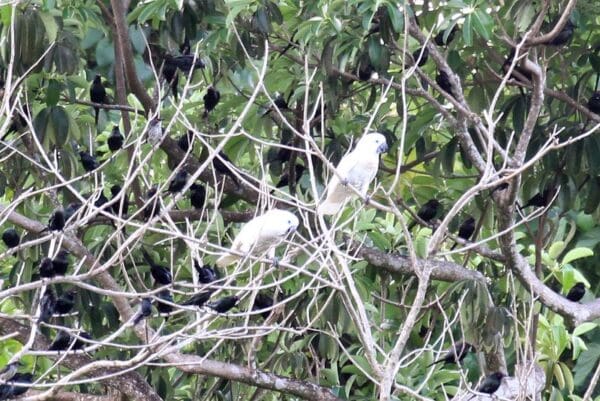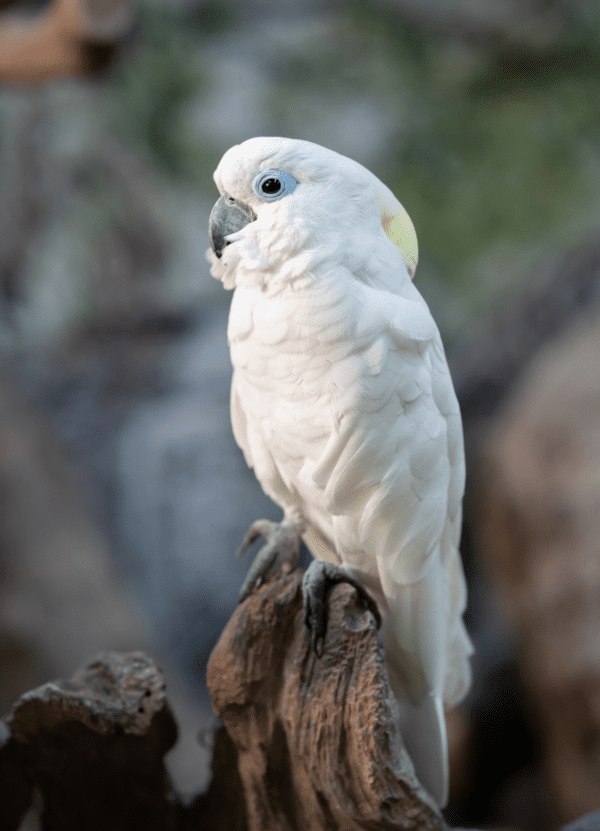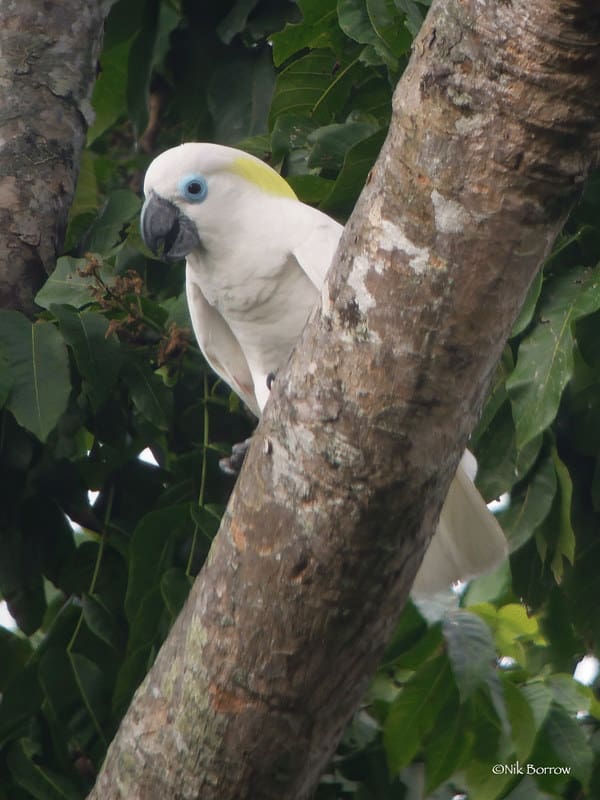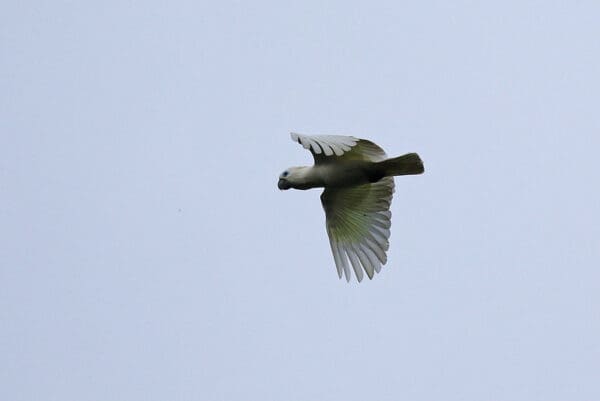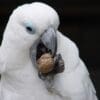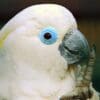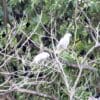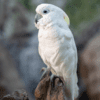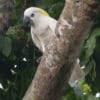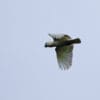DID YOU KNOW?
The Blue-eyed Cockatoo is the only cockatoo in eastern Papua New Guinea.

Cacatua

ophthalmica
Size:
50 cm (19.5 in)
Weight:
500-570 g (17.5-19.9 oz)
Subspecies including nominate:
one
Colour Adult:
Both adults: a medium-large, white cockatoo with backward curving crest; some yellow feathers in crest, rest white; yellow wash on ear coverts and bases of feathers of cheeks, throat; eye ring bright blue. Eye dark brown in male, red/brown in female. Beak dark grey.
Colour Juvenile:
As in adult but eye grey.
Call:
Described as loud and nasal, repeated and given in flight, each note ending in a downward fashion; call notes high-pitched and sad-sounding.
More Information:
Content Sources:
CITES
Avibase
BirdLife International
Cornell Lab of Ornithology/Birds of the World
A Guide to Parrots of the World, Juniper and Parr, 1998
Parrots of the World, Forshaw and Cooper, 1977, 1989. 2010 edition
Parrots of the World, Forshaw, 2006.
Parrots in Aviculture, Low, 1992.
Captive Status:
Very rare
Longevity:
40-50 yrs.
Housing:
Walk-in aviary, minimum length 4.5 m (14.7 ft).
Diet:
Mix of small seeds: canary, oats, safflower; spray millet; limited sunflower seed, dry, soaked or sprouted; sprouted pulses, cooked butterbeans and lentils; boiled maize; green leaves of Swiss chard, lettuce, sowthistle, dandelion, chickweed; vegetables such as: carrot, celery, corn, zucchini, green beans and peas in the pod; fruit such as: apple, pear, orange, cactus fruits, bananas; nuts such as: walnuts, hazelnuts, pecans, roasted peanuts; complete kibble.
Enrichment:
Bathing, socialisation, chew and puzzle toys, swings, ropes.
Nest Box Size:
40 cm x 40 cm x 100 cm ( 15.5″ x 15.5″ x 39″) box.
Clutch Size:
2 or 3
Fledging Age:
12 weeks
Hatch Weight:
—
Peak Weight:
—
Weaning Weight:
—
World Population:
87,000-378,000 mature individuals, decreasing.
IUCN Red List Status:
Vulnerable
CITES Listing:
Appendix II
Threat Summary:
Recently, remote-sensing techniques have shown that the lowland forest on which this species relies for nesting sites is being cleared at a rapid rate, which is likely causing the population to decline precipitously. It is suspected that up to a third of tree cover may be lost from the species’ range over the next three generations.
Range:
Found in New Britain, E Papua New Guinea.
Habitat:
Occurs up to 950 m (3116 ft). Found in forest and partly cleared areas, most common in lowlands.
Wild Diet:
Feeds on fruits of coconut Cocos nucifera, Melanolepis multiglandulosa and Ficus sp., as well as the flowers of C. nucifera, Eucalyptus deglupta and Cryptocarya sp.
Ecology and Behaviour:
Keeps mainly to forest canopy; usually seen singly, in pairs or small groups; makes presence known with series of discordant notes. Most active in early morning and late afternoon. Acrobatics seen before roosting.
Clutch and Egg Size:
2 or 3 elliptical eggs, 52.0 x 31.5 mm (2 x 1.2 in)
Breeding Season:
January-May; nest is in tree cavity.
Related Links:
—
